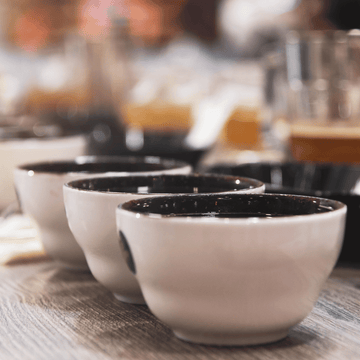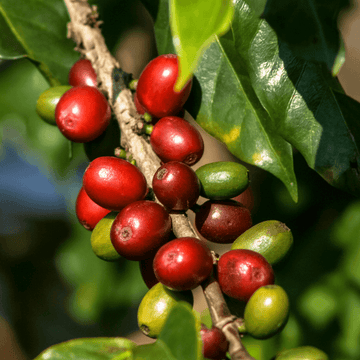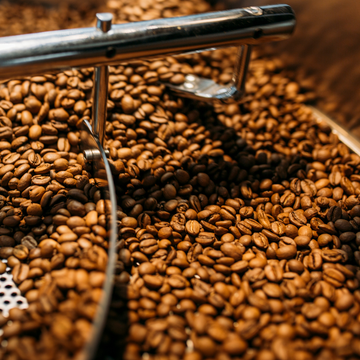Hosting a coffee tasting at home can be a great experience for everyone. By tasting coffees side by side you and your friends can see what kinds of coffees you like and dont like. Usually we have one cup of coffee at a time so it's hard to recall the cups you've had in the past, by tasting multiple coffees at the same time you're able to compare and contrast the differences.
Here are some steps to guide you:
1. Select a Variety of Coffees:
Choose different types of coffee beans, representing various regions or flavor profiles. Include a mix of light, medium, and dark roasts. Also think about different processing methods.
2. Necessary Equipment:
Have a coffee grinder, a brewing method (like a French press or pour-over), and cups ready. Ensure everything is clean to avoid flavor contamination. If you want to get professional you can brew the coffees using the Specialty Coffee Association cupping protocol. For this you'll need some 6oz cupping (soup) bowls.and soup spoons. You'll want to use 10 grams of each coffee along with 5 ounces of 200 degree water per cup.
3. Grind The Coffee Fresh:
Grind the coffee just before the tasting to preserve the flavors. Use a consistent grind size based on your chosen brewing method. If you're going to cup the coffees, a grind that is similar to paper filter will give you the best results. Just make sure that they are all ground at the same setting so there is no variance in the extraction from cup to cup.
4. Smell, Aroma and Fragrance
You'll want to take note of the aroma coming off of the coffee grounds. This will give you an indication of what flavors might be in the cup. You'll also want to smell them as they are brewing and see if any of the notes you picked up when the grounds were dry have changed.
5.Brewing.
You'll want to take care that all of the coffees are brewed exactly the same way, no matter what brewing method you're using. For best results weigh your coffee grounds and water to ensure that they are all brewed with the same specifications.
.
Here are some steps if you're going to cup the coffees: First you'll grind the coffee into the bowls, before adding the water take the time to smell the fragrance and aroma of the coffee grounds and take note of what you're smelling. Once ready, pour the water over the coffee so that all of the coffee grounds are saturated. Again take the time to smell the coffee and take note of what you're smelling. After 4 minutes take a soup spoon and slowly stir the coffee 3 times, again smell the fragrance of the coffee as you stir it. You'll want to make sure only to stir the coffee 3 times as we want all the coffees to be brewed identical. Once all the cups have been stirred you'll want to clean off the foam that has formed on the tops of each cup, do this carefully and try not to remove any of the liquid. Also have a bowl with clean hot water so that you can rinse the spoon off in between cups. The coffee will still be hot, so if you need to wait a few minutes before using the soup spoon to take a small sample of the coffee and taste it, again clean the spoon off in the hot water bowl before moving onto the next sample. You'll want to taste the coffees periodically as they cool so you can see how the coffees open up and change.
6. Tasting Process:
Have participants sip the coffee and take note of flavors, acidity, body, and finish. Discuss these aspects openly, sharing individual impressions.
7. Provide Palate Cleansers:
Offer water and plain crackers to cleanse the palate between tastings.
8. Consider Food Pairings.
If desired, pair certain coffees with complimentary snacks like chocolate, pastries or cheeses to enhance the tasting experience. See how the food changes the way your palate perceives the coffee while being paired with the food.
9. Create a Relaxing Atmosphere:
Play soft background music, and encourage conversation. A relaxed setting allows participants to savor the tasting experience.
Remember, the key is to enjoy the process and share insights with fellow coffee lovers..





